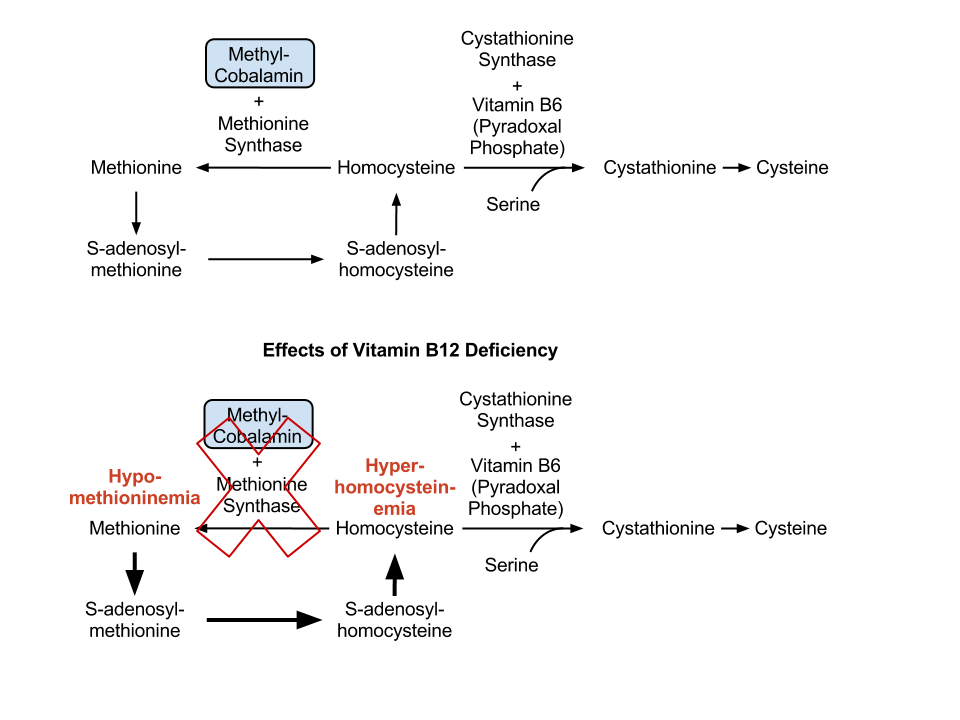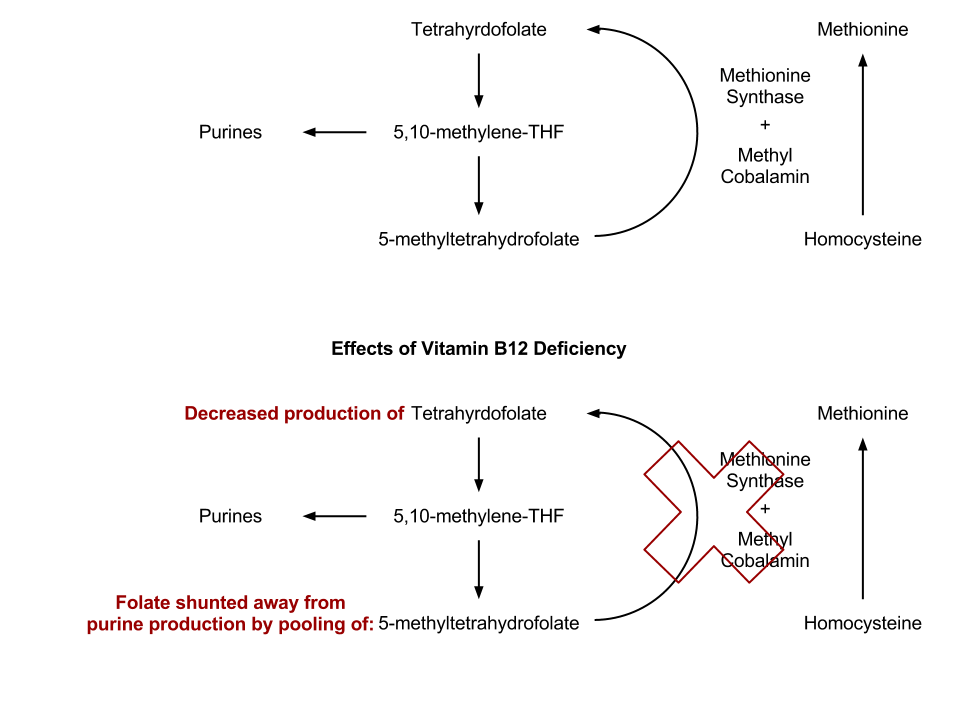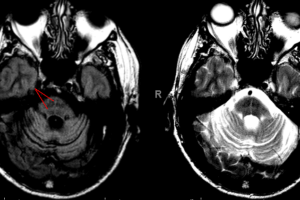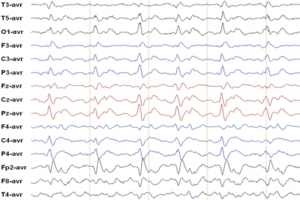
Cobalamin (Vitamin B12) derivatives are cofactors in the synthesis of both amino acids and purines. B12 deficiencies, as a result, cause problems with both DNA and protein synthesis.
Vitamin B12 and amino acid synthesis
Cobalamin is a cofactor in the formation of methionine from homocysteine. There is a separate pathway to regenerate homocysteine from methionine independent of cobalamin. As a result Vitamin B12 deficiency causes a build-up of homocysteine from methionine and a reduction in methionine. The net effect is hypomethioninemia and hyperhomocysteinemia.

Note that in B6 deficiency (or cystathionine synthase deficiency) there is a buildup of methionine.
Vitamin B12 and purine synthesis
Cobalamin is also a cofactor in the synthesis of purines and thymidine. When B12 is deficient, tetrahydrofolate cannot be regenerated from 5-methyltetrahydrofolate, so folate gets sequestered as 5-methyltetrahydrofolate which cannot be used to produce purines. As a result high-turnover tissues are damaged, producing megaloblastic anemia, diarrhea and glossitis.

Why both vitamin B12 and folate are needed
As you can see from Figure 2, purine synthesis can be rescued by exogenous folate. This feeds into the tetrahydrofolate pathway solving the anemia and diarrhea problem. However, without B12 the hyperhomocysteinemia and hypomethioninemia persist, and these are the abnormalities that cause the neurological problems outlined next. That is why folate and B12 should always be supplemented together – a physician might be falsely comforted by the resolution of anemia when in fact neurological deficits are still brewing.
Vitamin B12 and succinyl CoA
Cobalamin is also the main cofactor in the conversion of methylmalonyl CoA (MMA) into succinyl CoA. When vitamin B12 is deficient MMA builds up and has neuro-toxic effects.
Neurological presentations of Vitamin B12 deficiency
There most common presentation of vitamin B12 deficiency is subacute combined degeneration. SCD is a mixture of central and peripheral damage including peripheral neuropathy, damage to the dorsal column resulting in sensory ataxia, and damage to the corticospinal tract resulting in symmetric spastic paraparesis.
Less common, and sometimes congenital presentations include homocystinuria (induces endovascular injury putting patients at risk for thromboembolic stroke. When due to congenital deficiencies it can produce mental retardation, marfanoid features with lens dislocation), methylmalonic aciduria (ketotic hyperglycinemic encephalopathy), and methylmalonic aciduria with homocystinuria (hemolytic uremic syndrome, congenital syndrome with dysmorphic features, seizures, ataxia and developmental delay).
Reference
Espay and Biller (2011) Concise Neurology. Lippincott Williams & Wilkins; 1 edition (March 29, 2011)


